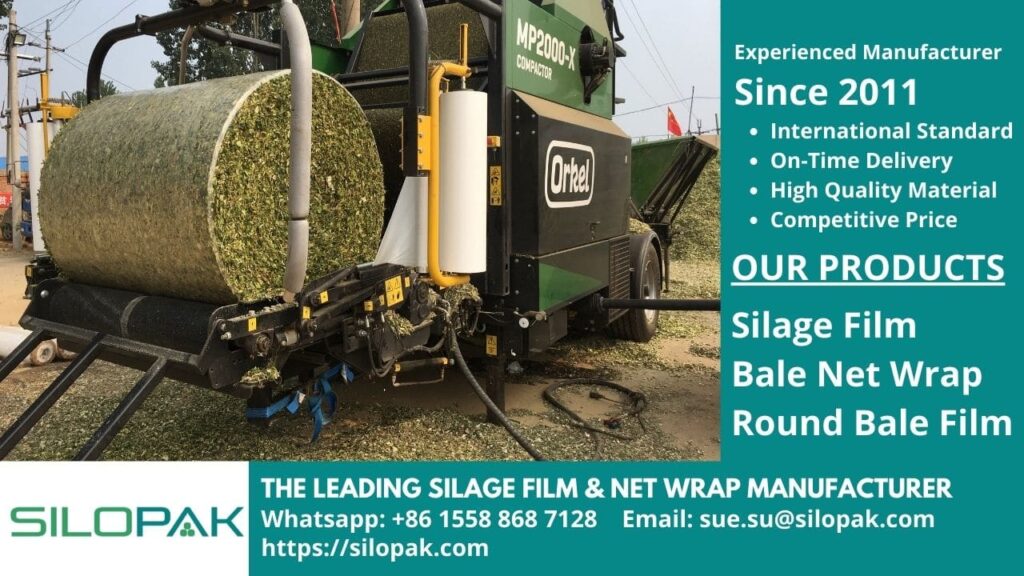
Dry matter content is one of the most important aspects of making silage. The right composition of ingredients will produce fermented feed with optimal nutritional content, more durability, and the taste is liked by livestock. Silage must be ensured not too dry and not too wet, and this requires experience and precise calculations.
contents
What is Dry Matter Content in Silage?
Silage consists of a mixture of certain materials, including dry and wet materials. Dry matter content supports fermented feed to last longer with maintained nutritional content. But if this material is too dominant, it will be difficult for livestock to digest it. Conversely, too little dry matter will make the silage wet and hinder the fermentation process.
Fresh green grass is liked by livestock, and this kind of feed has a high moisture content. But as plants continue to grow and mature, they will have less water content, and this is what is called dry matter. In this situation, the green color of the plant turns yellow or golden brown, indicating a lower water content.
Example of Dry Matter Content
Beginners may still be unfamiliar with the various ingredients that must be mixed in silage. Especially for dry matter content, you can take it from corn or the woody part of the grass. Straw and grass left over from harvests are also good dry materials for making silage. You can consult a veterinary nutritionist to make sure the mixture of ingredients to be cured in the silage supports the health and productivity of the livestock.
Ideal Dry Matter Content
Making silage starts with collecting green material and dry matter in one container, then the silage is wrapped in silage film or stored in an airtight container. Cutting and compaction of silage material must be done in the right way, and at the right time, to produce good, durable fermented feed that can be enjoyed by livestock under various conditions.
Ideally, silage using crop residues consists of 15 percent green matter and 40 percent dry matter. But if you make silage from pasture grass, the dry matter content is in the range of 15 percent to 20 percent. Meanwhile, the dominance of dry matter made from corn is a maximum of 40 percent from silage. The ideal composition will make the fermented feed contain high energy, fiber, and protein.
What if the Silage is Too Dry or Too Wet?
Too much dry matter content will make the silage very dry. It’s like serving coffee without water, it will taste bad and dry. Coynversely, too little dry matter will make the silage lose a lot of energy and protein, and will erode the sugar content. This will inhibit the fermentation process and will eventually make the silage rot quickly.
How to Test Dry Matter Content in Silage
Dry matter testing for silage can be done by squeezing the plant by hand and then squeezing it to see how much water is in it. But it’s an old way that is very ineffective. Currently, there are many tools available that can be used to test dry matter content levels, one of which is by using a special microwave.
Agricultural Technology for High-Quality Silage Production
Accuracy and work methods according to the guidelines are the keys to successful silage-making. On the other hand, years of experience in making silage will make you more adept at making highly nutritious silage for livestock during the dry season.
But all the efforts you make must also be supported by the use of the best agricultural technology. This will make the work process faster and more efficient, even if you are making large quantities of silage.
Benefits of Agricultural Technology
The following are the benefits of agricultural technology in making silage:
- The process of cutting, compacting, and wrapping up to the transportation and fermentation stages should run more neatly and quickly with the right tools.
- The use of certain agricultural technologies can also make it easier for you to accurately measure the moisture content of dry ingredients.
- All silage materials, including dry matter content, are ensured to be in the right composition. The use of special machines makes farmers determined to proceed to the next stage, namely compacting and wrapping silage with high-quality silage film.
Cooperation with the best suppliers is very important so that you can get high-quality supporting equipment for making silage. You also have to be selective about choosing silage film, bale net wrap, or round bale film which is guaranteed, and has high elasticity so it is resistant to punctures and tears.
Finally, dry matter content is an important part of making silage to ensure that fermented feed contains sufficient energy and nutrients for livestock. Mixing ingredients with the right and accurate technique will also be a favorite food for livestock, and the success of making silage will save you a lot in the dry season and can support your health and strengthen the immune system of livestock.
